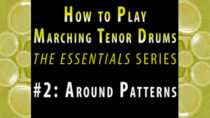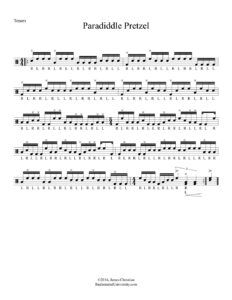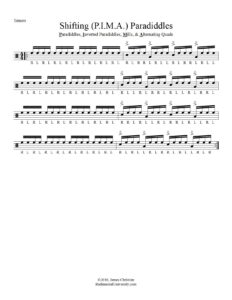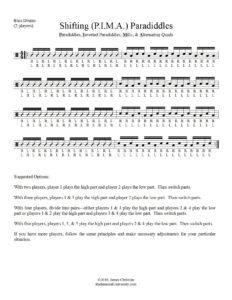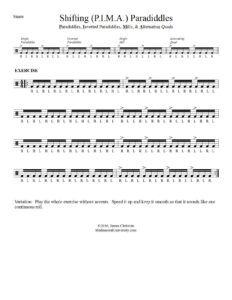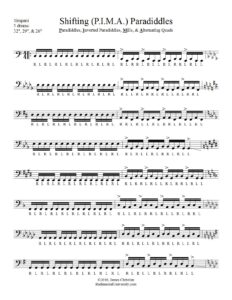
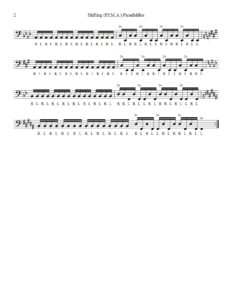 Click on the images to enlarge the exercise or click here to download in PDF format.
Click on the images to enlarge the exercise or click here to download in PDF format.
Throughout this week we have been looking at the “Shifting Paradiddles” exercise adapted for different percussion instruments. So far, we have looked at applications for snare drum, keyboard percussion, and bass drums.
Today’s variation for timpani may be the most challenging variation of them all due to its pedaling difficulties. The exercise utilizes three drums. It can be played along with the keyboard variation as it cycles through all 12 keys. As the key changes every two measures, the three drums are tuned to the root major triad.
The exercise falls into three sections, each ending with a quarter note…
Measures 1-8: The singles check pattern is on the highest drum, while the paradiddle variations are on the lowest two drums.
Measures 9-16: The singles check pattern is on the lowest drum, while the paradiddle variations are on the highest two drums.
Measures 17-24: The singles check pattern is on the middle drum, while the paradiddle variations are on the highest and lowest drums.
During the check pattern, you will have to pedal the other two drums—and during the paradiddle variations, you will have to pedal the other drum. Throughout each 8-measure section, each drum will progressively be tuned a half step higher. On the final measure, the quarter note should glissando smoothly into the next 8-measure section. For the final note of the exercise, you may want to utilize a downward gliss on repeats and use no gliss the final time through.
Of course, this exercise will be much easier if you have gauges on your timpani. If you do not, you can still achieve it with careful practice. Take it slowly and use a keyboard or pitch pipe to check yourself on every pitch change. Once you get all of the transitions down smoothly, this will be a pretty impressive exercise.


